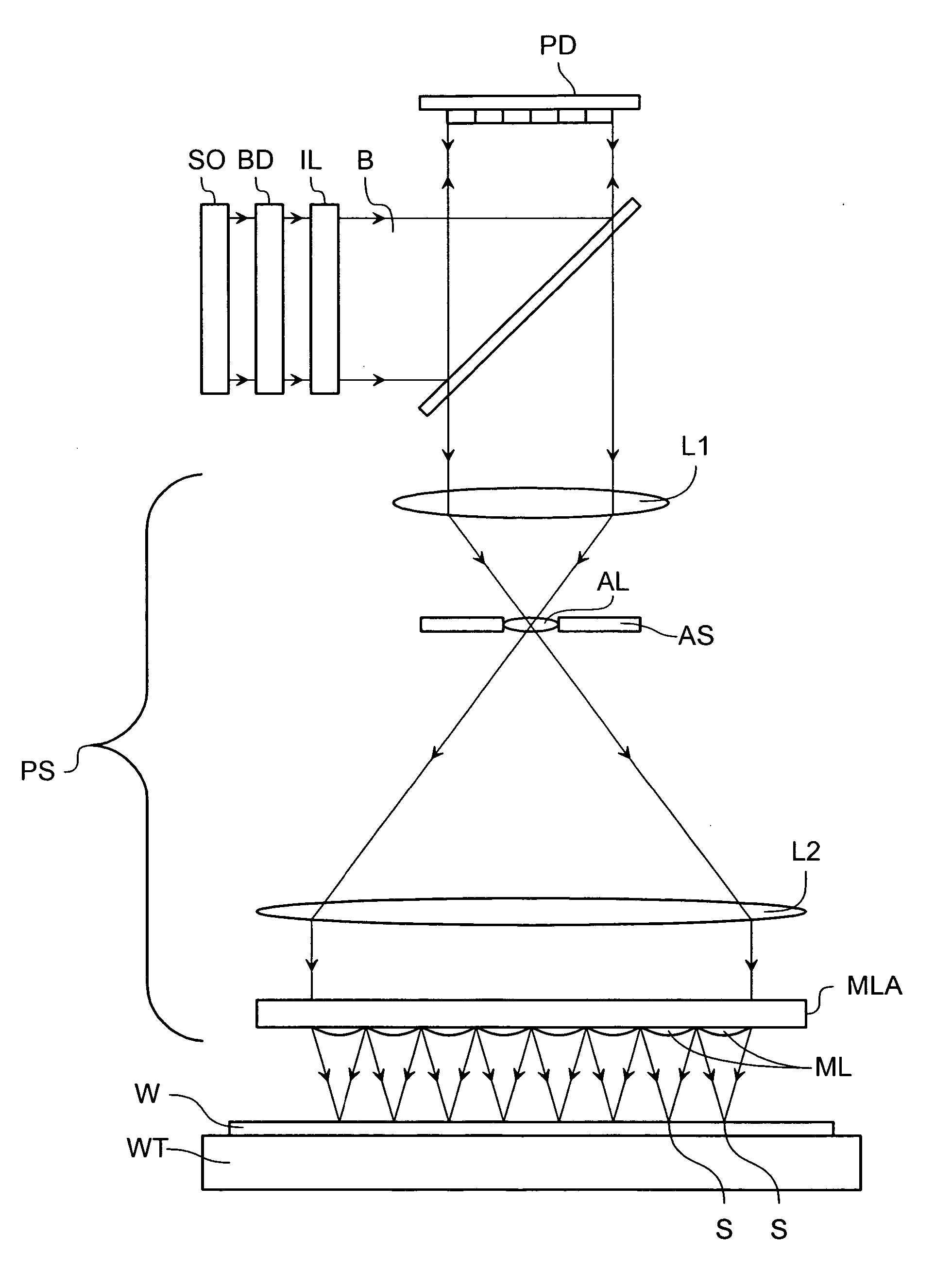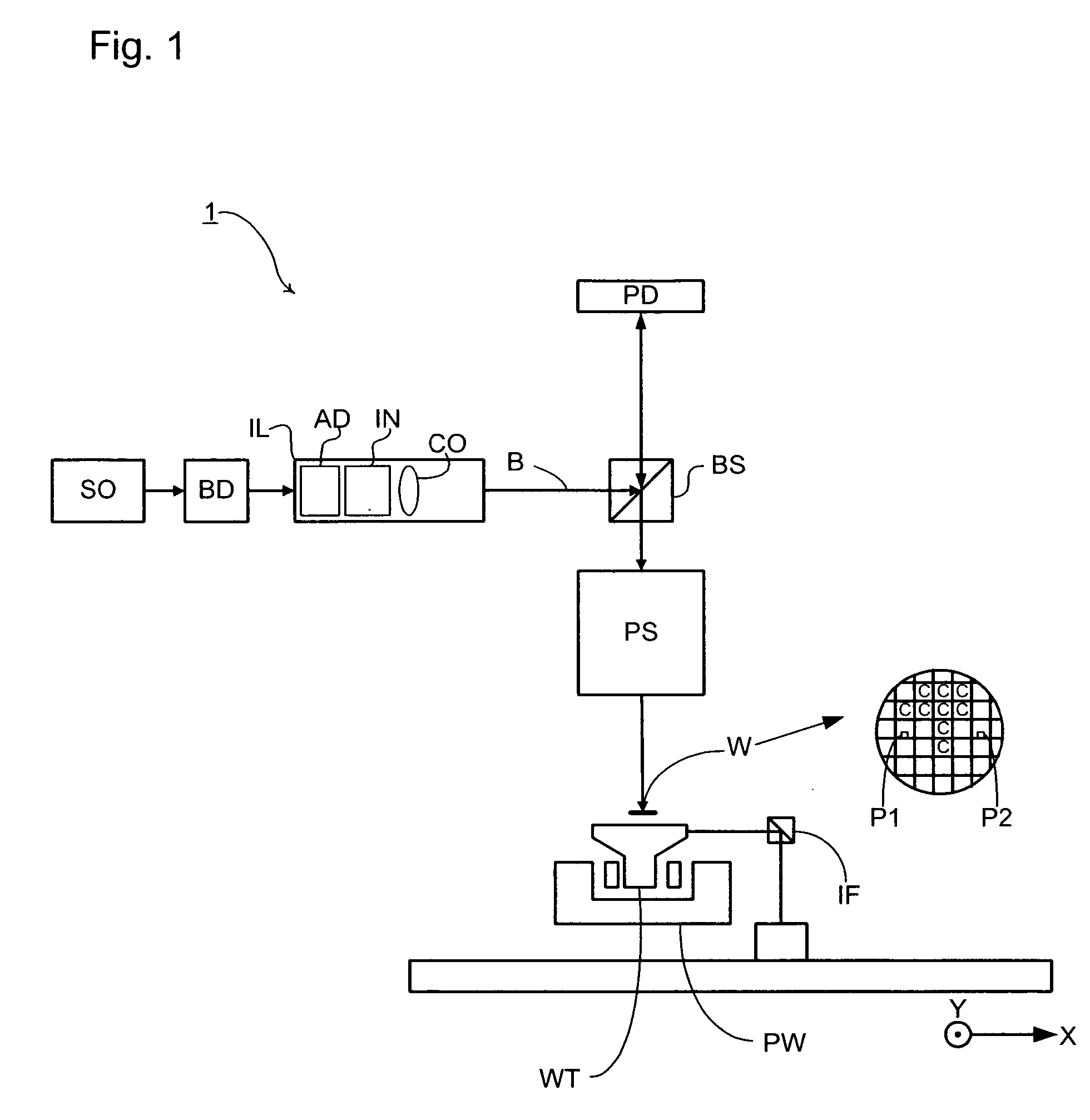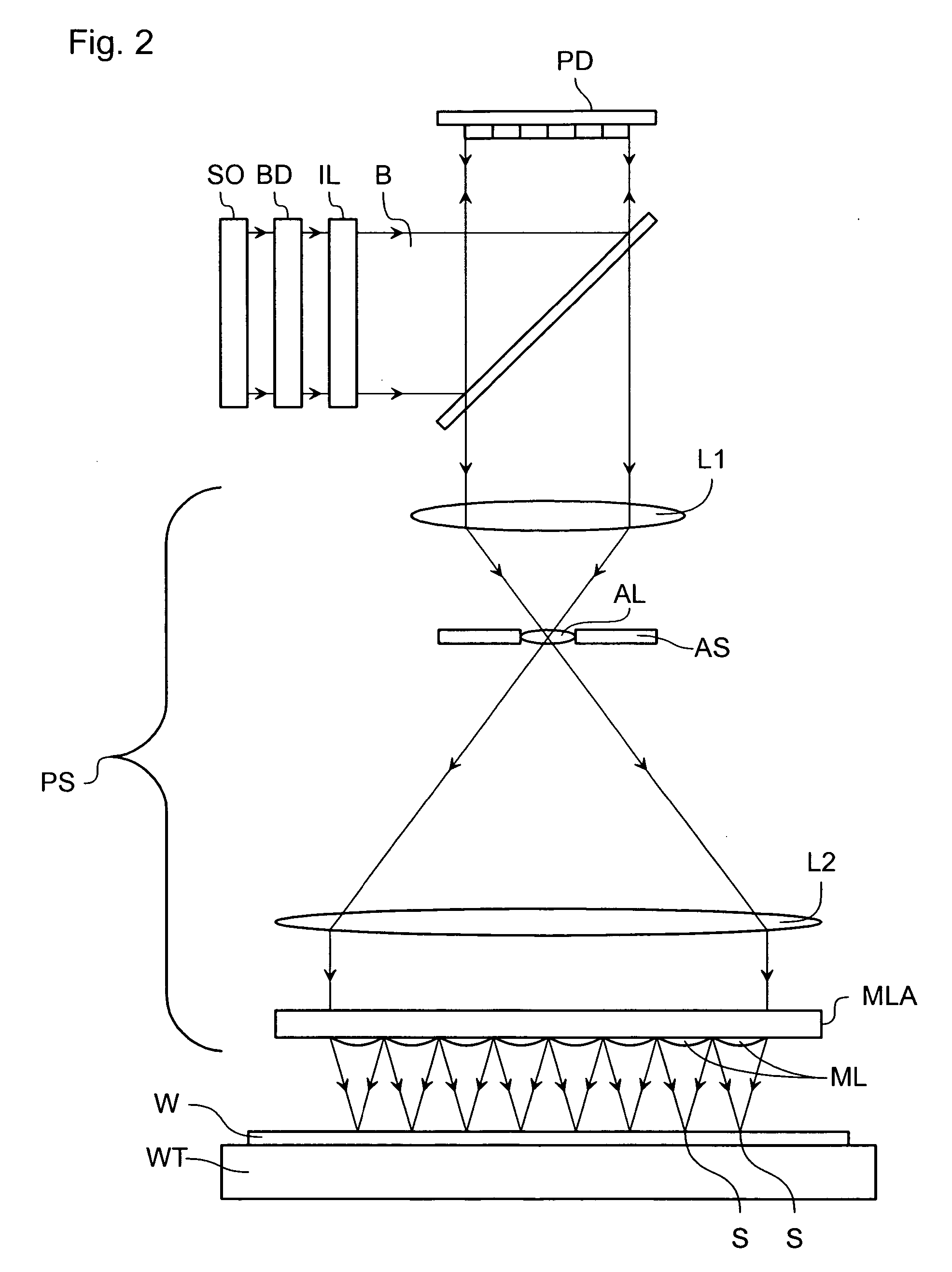Lithographic apparatus and device manufacturing method utilizing a MEMS mirror with large deflection using a non-linear spring arrangement
a technology of mems mirror and non-linear spring arrangement, which is applied in the direction of photomechanical apparatus, instruments, optics, etc., can solve the problems of non-linear relationship between the voltage applied to the electrostatic actuator and the displacement of the mirror, and the control system is necessarily complex and requires a significant amount of memory
- Summary
- Abstract
- Description
- Claims
- Application Information
AI Technical Summary
Benefits of technology
Problems solved by technology
Method used
Image
Examples
embodiment 1
[0091]FIGS. 7a, 7b, and 7c depict a configuration of an individually controllable element, according to a first embodiment of the present invention. For clarity, the actuator system is not shown. However, it will be appreciated that it can be the same as that depicted in FIG. 5. The individually controllable element 30 is comprised of a reflector 31 mounted by hinges 32 on supports 33, for example in the same manner as discussed above in relation to FIG. 5. Accordingly, as the reflector 31 rotates about an axis through the hinges 32, the hinges deform elastically exerting a force on the reflector 31 to bias the reflector towards its original position. The force exerted by the hinges 32 is proportional to the displacement from its original position. The individually controllable element 30 further includes an interceptor arrangement 34,35 that operates in the manner discussed below.
[0092] The interceptor arrangement includes an additional support 35 that is fixed relative to the rem...
embodiment 2
[0097]FIG. 9a depicts an arrangement of an individually controllable element, according to the second embodiment of the present invention. The second embodiment is a variation of the first embodiment, and only the differences thereof will be discussed. It should be appreciated that any variations discussed above in relation to the first embodiment can also be applicable to the second embodiment.
[0098] As depicted, the individually controllable element 40 includes a reflector 41 mounted by hinges 42 to first supports 43. The individually controllable element further includes a first set of resilient members 44 that interact with a first set of additional supports 45 after the reflector 41 has rotated by a first amount. Accordingly, the stiffness of the configuration is initially provided by the deformation of the hinges 42, and thereafter by the combination of the deformation of the hinges 42 and the deformation of the first set of resilient members 44. The individually controllable...
embodiment 3
[0100]FIG. 10 depicts an individually controllable element 50, according to a third embodiment of the present invention. The third embodiment is a variation of the first embodiment of the present invention and only the differences thereof will be described. It should be appreciated that variations of the first embodiment can also be applicable to third embodiment.
[0101] As depicted the individually controllable element 50 includes a reflector 51 rotatable about hinges 52 mounted to supports 53. As with the first embodiment, the individually controllable element of the third embodiment is configured such that after a given rotation of the reflector 51 an interceptor arrangement is configured such that an additional force is exerted on the reflector 51 by a resilient member such that the effective stiffness of the reflector arrangement increases for any further deflection. Whereas in the first embodiment, the resilient member is provided to the reflector and interacts with a support ...
PUM
| Property | Measurement | Unit |
|---|---|---|
| diameter | aaaaa | aaaaa |
| diameter | aaaaa | aaaaa |
| diameter | aaaaa | aaaaa |
Abstract
Description
Claims
Application Information
 Login to View More
Login to View More - R&D
- Intellectual Property
- Life Sciences
- Materials
- Tech Scout
- Unparalleled Data Quality
- Higher Quality Content
- 60% Fewer Hallucinations
Browse by: Latest US Patents, China's latest patents, Technical Efficacy Thesaurus, Application Domain, Technology Topic, Popular Technical Reports.
© 2025 PatSnap. All rights reserved.Legal|Privacy policy|Modern Slavery Act Transparency Statement|Sitemap|About US| Contact US: help@patsnap.com



